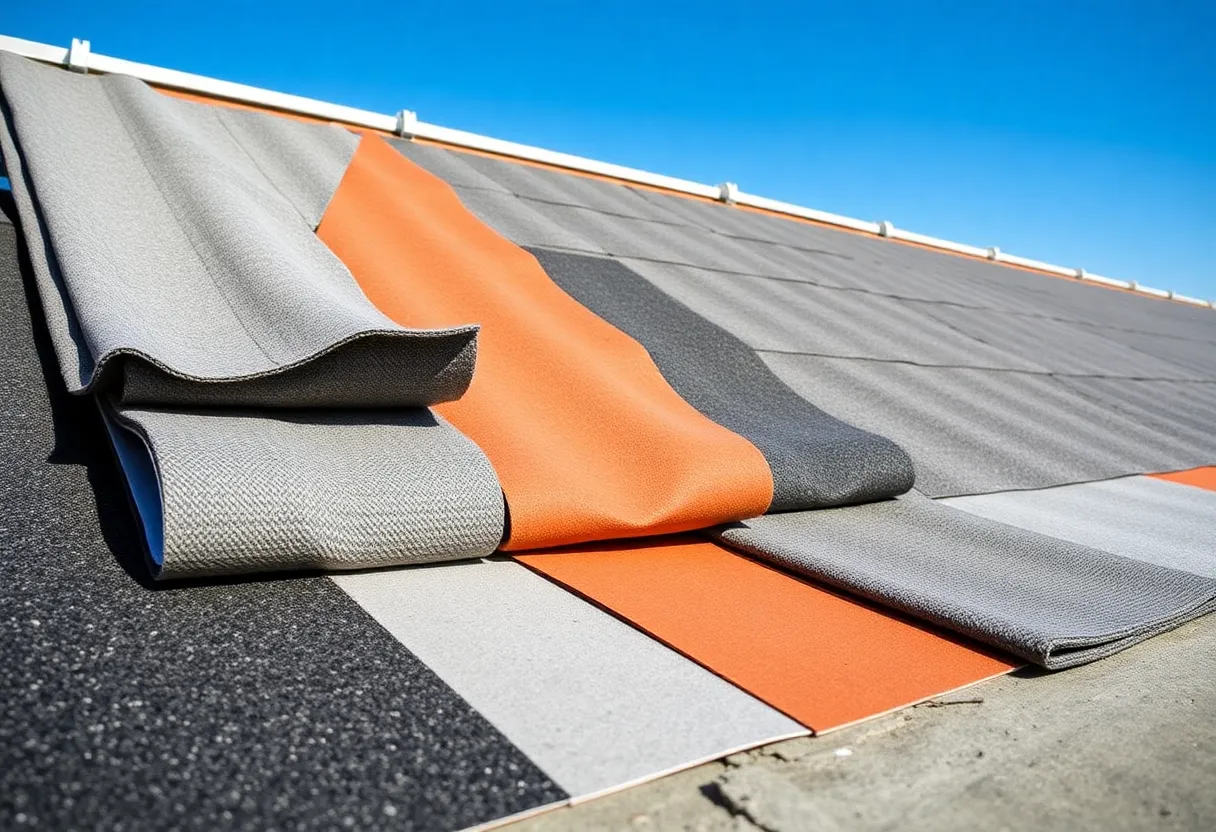How to Choose the Right Roofing Underlayment for Maximum Protection and Performance
Choosing the right roofing underlayment is a pivotal decision in safeguarding a roof’s integrity. Underlayment acts as a secondary barrier against water, ice, and various environmental factors. Selecting the appropriate underlayment material can significantly impact your roof’s longevity and performance.
Understanding Roofing Underlayment
Roofing underlayment is a protective layer installed directly on the roof deck, beneath the primary roofing material. It plays an essential role in enhancing the roof’s functionality. There are three primary types of underlayment: felt, synthetic, and rubberized asphalt. Each type comes with specific features that cater to different roofing needs.
Types of Roofing Underlayment
Felt Underlayment
Felt underlayment, often made from organic or fiberglass materials, has been a staple in roofing for years. It comes in two varieties:
- Organic felt (made from recycled paper and soaked in asphalt)
- Fiberglass felt (more moisture-resistant and durable)
Felt underlayment is affordable but heavier and less resistant to tearing and moisture than synthetic options. It is best suited for low-slope roofs.
Synthetic Underlayment
Synthetic underlayments are composed of polypropylene or polyethylene. They provide significant advantages:
- Lightweight and easy to install
- Exceptional tear resistance
- High water resistance
While they may come with a higher initial cost, the overall longevity and effectiveness can make them a more cost-effective solution.
Rubberized Asphalt Underlayment
Rubberized asphalt underlayment is a premium option featuring a strong adhesive backing. This type is crucial for locations prone to ice dams or heavy rainfall. Key characteristics include:
- Excellent waterproofing capabilities
- Adhesion that prevents water intrusion
- Flexibility in extreme temperatures
This type is best suited for low-slope roofs, valleys, and other high-risk areas.
Factors to Consider When Choosing Underlayment
Climate and Weather Conditions
The climate in your area significantly impacts the type of roofing underlayment you should choose. For regions with heavy rain or snowfall, synthetic or rubberized asphalt options provide superior waterproofing. In warmer climates, felt underlayment may suffice but ensure it has UV resistance properties.
Roof Pitch
The pitch of your roof also dictates underlayment choice. Steeper roofs may afford the luxury of various types, while low-slope roofs require options that can withstand ponding water, making rubberized asphalt or synthetic underlayment preferable.
Installation Method
Your roofing system’s installation method might influence underlayment requirements. For installations featuring shingles, the underlayment must be compatible to ensure a cohesive barrier. Always consult manufacturer guidelines to avoid issues down the line.
Budget Considerations
While synthetic and rubberized options are more expensive initially, their longevity and performance can yield better value over time. Weigh up-front costs against the long-term protection provided.
The Importance of Building Codes
It is essential to consult local building codes before making a decision, as these regulations often dictate specific underlayment types based on climatic conditions and roof design. Non-compliance may lead to fines or more severe repercussions during inspections and home sales.
Benefits of Proper Underlayment
Utilizing the correct roofing underlayment has several benefits, including:
Enhanced Protection
Underlayment provides a secondary line of defense against water infiltration, helping to preserve the underlying structure from moisture damage.
Improved Energy Efficiency
A quality underlayment can improve energy efficiency by providing additional insulation. This helps maintain consistent indoor temperatures and reduce energy costs.
Increased Roof Lifespan
Proper underlayment contributes to the overall durability of your roofing system. It reduces the risk of leaks, mold, and rot, extending the life of the roof.
Surface Protection
During installation, the underlayment protects the roof deck from debris and moisture, preventing damage before the primary roofing material is applied.
Installation Tips for Roofing Underlayment
Following best practices for installation is crucial to maximize the benefits of your chosen roofing underlayment. Consider these tips:
Follow Manufacturer Guidelines
Each type of underlayment comes with specific installation instructions. Adhering to these guidelines ensures maximum performance and warranty protection.
Use Overlapping Seams
When laying underlayment, ensure overlaps range from 4 to 6 inches. This creates a watertight seal, preventing moisture ingress.
Secure Fasteners Appropriately
Fasteners should be installed according to the manufacturer’s specifications. They should not penetrate the entire underlayment, as this can create points of vulnerability for leaks.
Inspect Before Covering
Before installing the primary roofing material, inspect the underlayment for any tears, punctures, or missed areas. Address any issues immediately to avoid later complications.
Conclusion
Choosing the right roofing underlayment is a fundamental step in ensuring the safety and longevity of your roofing system. Consider factors such as climate, roof pitch, budget, and local building codes when selecting the most suitable underlayment type. Remember, the efficacy of your roof extends beyond the exterior; a solid underlayment protects everything beneath it.
Investing in the right roofing underlayment today can save you considerable expenses and stress in the long run. Arm yourself with the necessary knowledge and consult professionals when needed to secure your home for years to come.
Author: HERE Greenwood
The GREENWOOD STAFF WRITER represents the experienced team at HEREGreenwood.com, your go-to source for actionable local news and information in Greenwood, Greenwood County, and beyond. Specializing in "news you can use," we cover essential topics like product reviews for personal and business needs, local business directories, politics, real estate trends, neighborhood insights, and state news affecting the area—with deep expertise drawn from years of dedicated reporting and strong community input, including local press releases and business updates. We deliver top reporting on high-value events such as the Festival of Flowers, Greenwood Community Theatre performances, and agricultural showcases at the Greenwood County Fairgrounds. Our coverage extends to key organizations like the Greenwood Chamber of Commerce and the Greater Greenwood United Ministry, plus leading businesses in manufacturing and healthcare that power the local economy such as FujiFilm Manufacturing and Self Regional Healthcare. As part of the broader HERE network, including HERECharleston.com, HEREColumbia.com, HEREGreenville.com, and HEREHiltonHead.com, we provide comprehensive, credible insights into South Carolina's dynamic landscape.




 Mays Contracting
Mays Contracting

